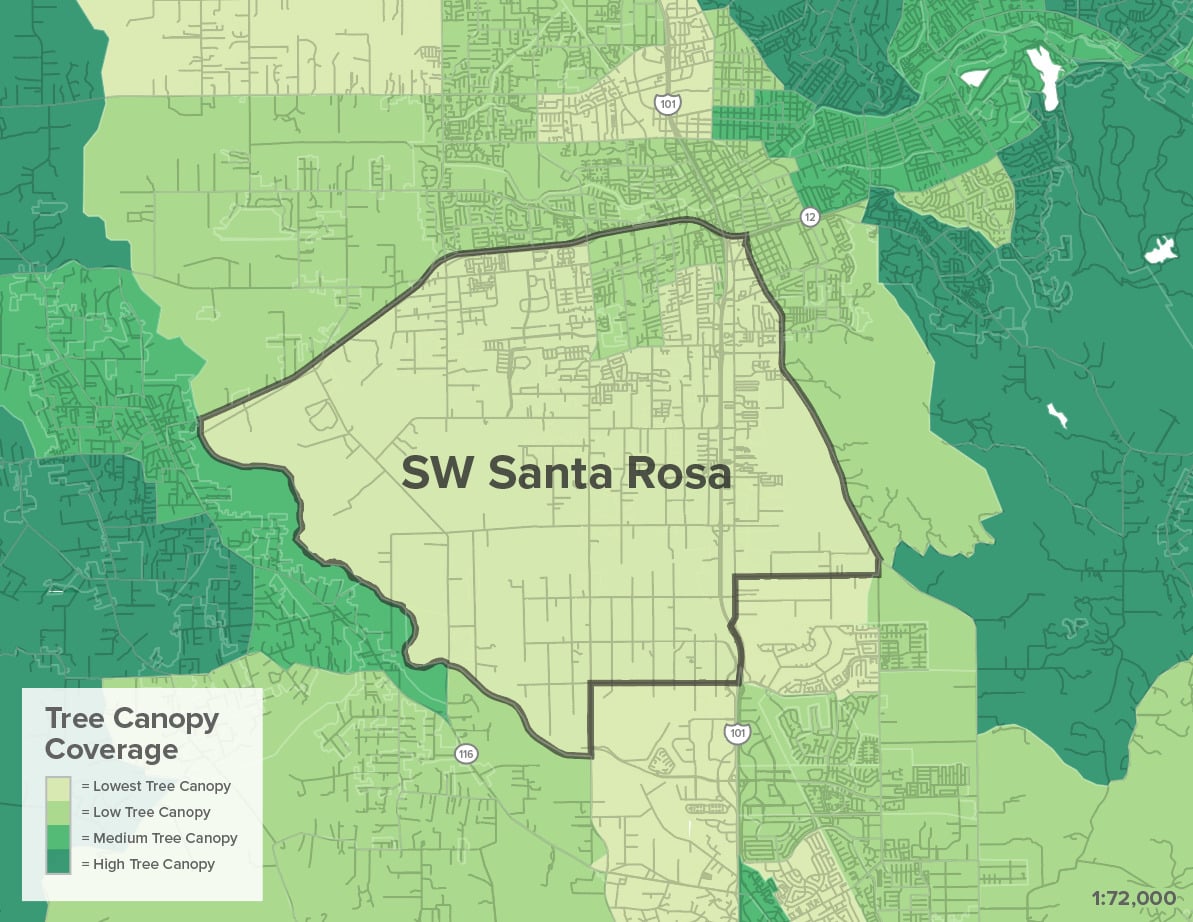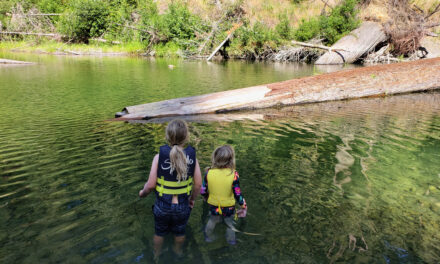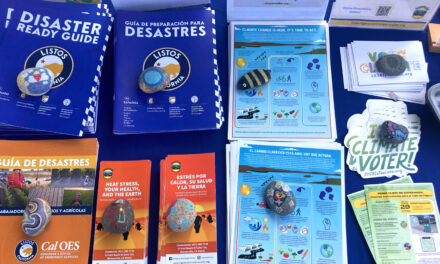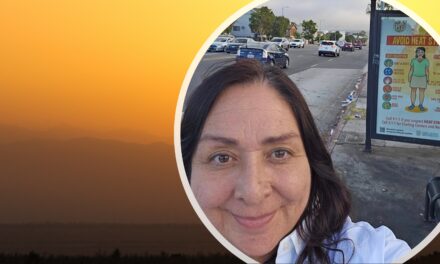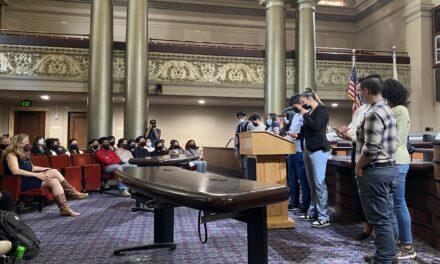Youth Group Tackles Heat Islands in Santa Rosa

The youth advisory team debriefed after noting temperature variations at four neighborhood locations. Photo: Amy Moore
Jimena Santos recalls hot summers in Roseland throughout her childhood. When she was young, outdoor play with her friends always involved water — running through sprinklers and tossing water balloons to bear the heat. Now, as a high school senior at Roseland University Prep, she mostly stays in her room or goes to the mall to escape the heat.
On Sunday, Oct. 19, she and seven other members of a new extreme heat youth advisory team met for a workshop to learn about urban environments in southwest Santa Rosa and gather data about heat variations in their neighborhood. Sunday’s event was the second in a series of nine monthly workshops for local Latino youths. The series was organized by the Greenbelt Alliance in partnership with Latino Service Providers.
The team is composed of 13 interns between the ages of 18 and 25, who come to the project through Latino Service Providers’ Youth Promotores program, which trains Latino youth to serve as community health workers. The interns are compensated for their time with a stipend funded through a grant from the Governor’s Office of Land Use and Climate Innovation.
“The goal is really to empower these youth to guide and inform the development of the extreme heat action plan,” says Mariah Padilla, the North Bay resilience manager for Greenbelt Alliance. Through the program, team members will learn about climate change and how they can advocate on behalf of their community to their local government to build climate resilience. Padilla hopes these young people will become “the next generation of climate advocates.”
As part of Sunday’s workshop, the youth advisory team met with Cesar Estien, an urban ecologist with Second Nature Ecology and Design, who spoke to the group about how infrastructure impacts temperature in urban environments.
Estien showed the team several maps of southwest Santa Rosa. One showed how much of the area is paved, trapping and radiating more heat on a hot day. A second map (pictured below) showed how much of the area had tree canopy, which provides shade and cooler temperatures. A third map illustrated which parts of the area had vegetation, such as fields or parks, which contribute to cooler temperatures and allow for rain to permeate soil.
Other Recent Posts
Learning the Art of Burning to Prevent Wildfire
In Santa Rosa’s Pepperwood Preserve, volunteers are learning how controlled fires can clear out natural wildfire fuel before it can spark.
Martinez Residents Want More Than Apologies — They Want Protection
After a 2022 release of toxic dust and a February 2025 fire, people in the northeast Bay town are tired of waiting for safety improvements.
Weaving Fire Protection Out Of What’s Already There
A new Greenbelt Alliance report shows how existing vineyards, grasslands, and managed forests can slow wildfire and save vulnerable homes.
Fall Plantings Build Pollinator Habitats in Concord
Community groups, climate advocates and a church are coming together to plant pollinator gardens as monarchs, bees see population declines.
Newark Needs Housing, But Could Shoreline Serve A Higher Purpose?
The Bay Area needs more affordable housing, but would 196-homes or a buffer against sea level serve local needs better in the years ahead?
Who Will Inherit the Estuary? Training for a Rough Future
The six-month program teaches students aged 17 -24 about the challenges facing communities around the SF Estuary, from Stockton to East Palo Alto.
Split Verdict Over State of the Estuary
Habitat restoration and pollution regulations are holding the Bay steady, but the Delta is losing some of its ecological diversity, says SF Estuary Partnership scorecard.
Together, these factors lead to higher temperatures, creating “urban heat islands,” or parts of the city where actual temperatures are higher than the surrounding area because heat is trapped and intensified by heat-producing cars, trucks, and buildings, as well as materials such as asphalt and concrete.
Extreme heat carries a risk of heat stroke and heat exhaustion, and is particularly dangerous for vulnerable populations, such as elders, people with illnesses, and children. Most homes in southwest Santa Rosa also don’t have the air conditioning necessary to avoid these dangers.
To better understand why extreme heat disproportionately impacts southwest Santa Rosa, the team walked around the neighborhood to collect temperature data from four locations. Sunday was a mild fall day, significantly cooler than the region’s high summer temperatures.
Armed with handheld heat guns, which take a temperature reading at a specific spot, and sensors, which collect the ambient temperature at one-minute intervals, the team measured heat at each location in a variety of settings, such as in full sun or shade, and on grass, road surfaces, sidewalks, and park structures. They also answered questions about how they felt in each spot: Were they comfortable? Would they want to have a five-minute conversation right there?
Despite the mild 70-degree weather, the advisory team found many temperature disparities in their hour-long walk. Streets, at 100 degrees, were hotter than grass; and shade made a big difference.
The hottest surface was the park’s plastic slide, which, along with playground structures and metal picnic tables, was in full sun. Bree Arriaga took the temperature of the slide’s surface: 127 degrees. Both Arriaga and Santos played at that park as children. “I was sliding on that slide as a kid,” says Santos. “How are kids supposed to be playing on a playground like this?” Arriaga adds.
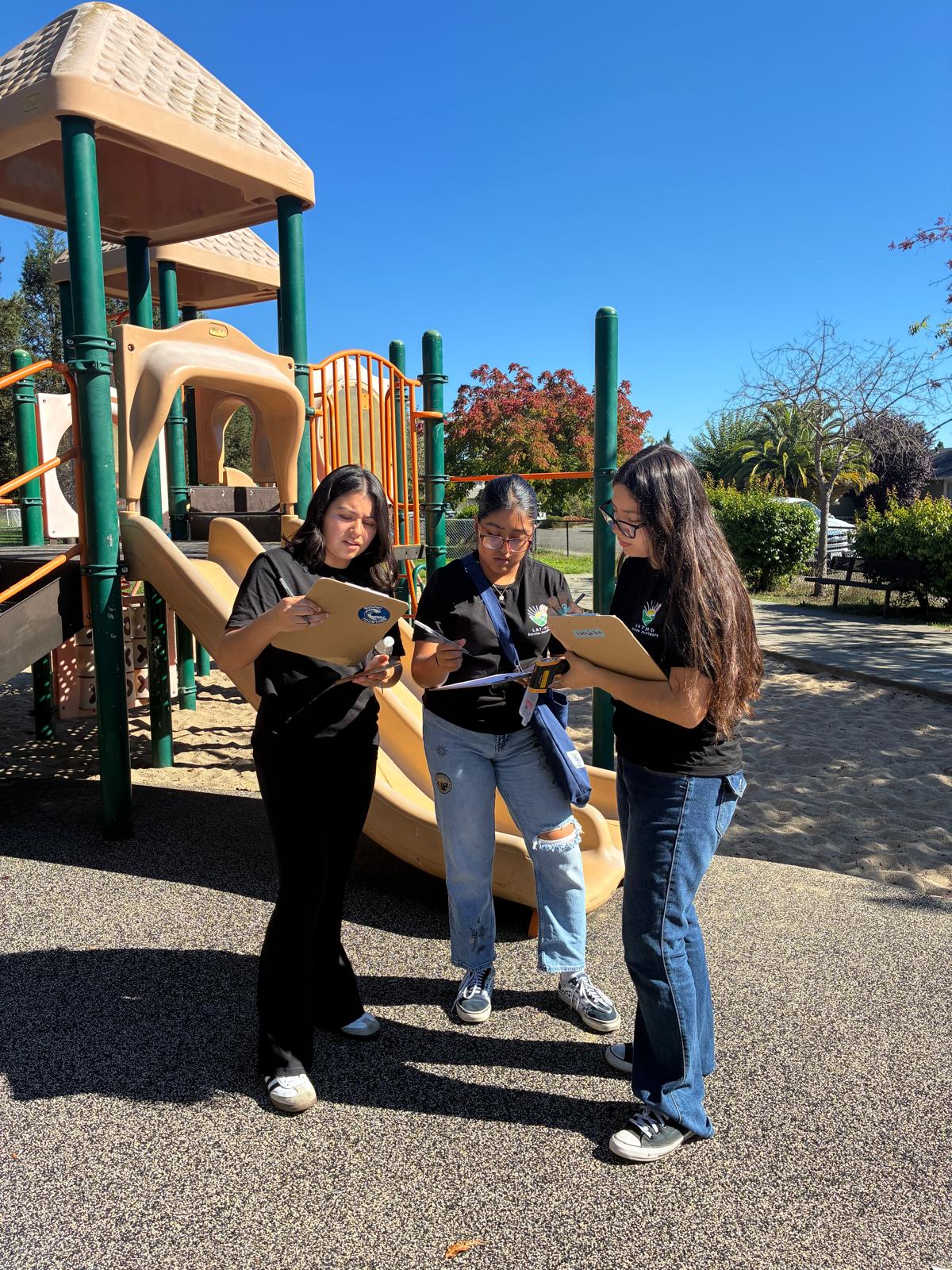
Members of the youth advisory team check temperatures on playground equipment in southwest Santa Rosa. Photo: Amy Moore
“I think some people would be really shocked (about the temperatures we found), while others wouldn’t be shocked at all, because they themselves have experienced the heat,” Santos says.
After the data collection, the team debriefed about their findings. Santos noted a 10-degree difference between temperatures taken on the grass under a tree (63 degrees) versus in full sun (73 degrees). The data collection inspired her to commit to planting more trees in southwest Santa Rosa.
Following the workshop, the team members will continue to take daily temperature measurements outside their homes. They’ll send their data to Estien, who will add the data points to a southwest Santa Rosa heat map to better document heat disparities in the area.
In future workshops, the team will learn about the root causes of heat vulnerability in southwest Santa Rosa, Padilla says. In November, Estien will lead the team on a deeper dive into issues such as heat illness and the urban heat island effect.
Arriaga, a team member in the Youth Promotores mental health track, looks forward to engaging with the community. Being on the youth advisory team enables her “to open that space in which I could talk about the climate, what to do, how to help, and how I can support others in enduring heat waves,” she says.
Santos says the workshops both motivate her to improve conditions for her community now and align with her future college goals. She wants to “persuade lawmakers or local officials that we need to change the infrastructure where people hang out and come to gather with their family,” she says, “and create a safer environment for kids growing up in these neighborhoods.”






